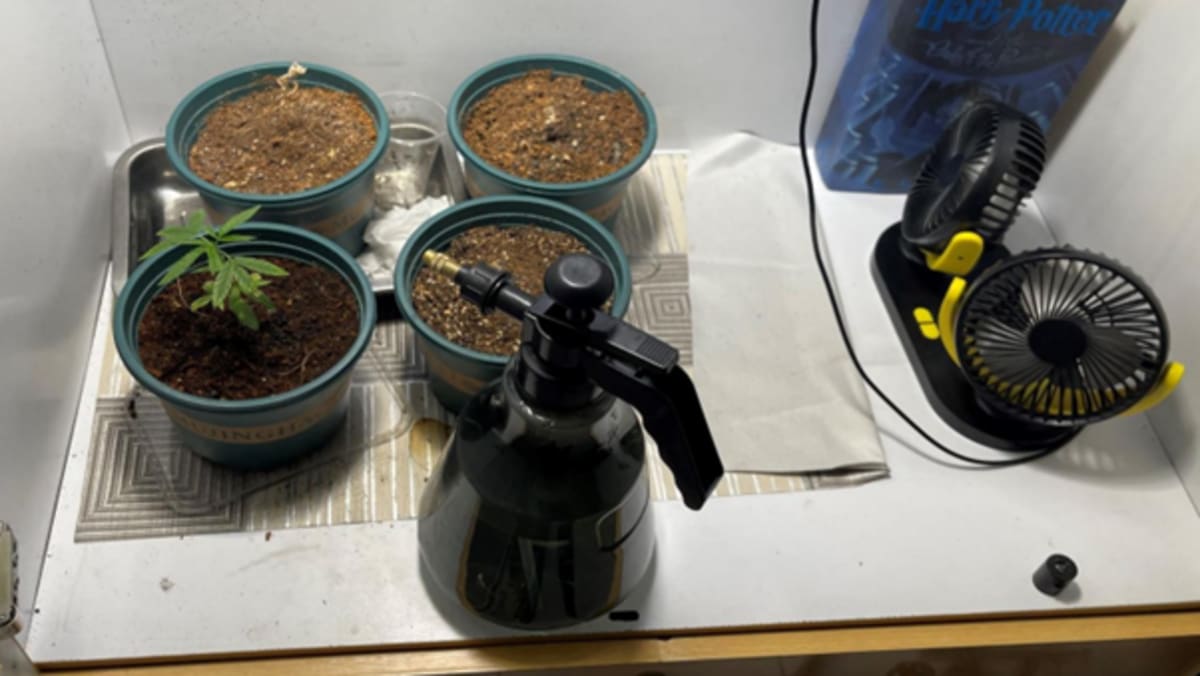SINGAPORE — Cross-cultural encounters often yield unexpected delights, and one such moment unfolded at a nasi padang stall here recently. Nasi padang is steamed rice served with various choices of pre-cooked dishes.
In a video posted on social media platform TikTok on Sunday (April 28), user Ms Felicia Song, a Singaporean, documented how her South Korean husband stepped out of his comfort zone by trying to order his meal entirely in Malay.
His efforts impressed not only the staff but also local netizens who praised his pronunciation, with some even going so far as to say he spoke better Malay than some locals here.
The video has since garnered more than 400,000 views and attracted more than 33,200 likes.
Ms Song asked that her husband be known only as Mr Hong, for privacy reasons.
‘TOLONG’ NOTEBOOK
As the couple were walking to the stall located in Bukit Panjang Hawker Centre, Mr Hong whipped out a notebook that would aid him in the ordering process and proudly showed it to his wife.
He added that the notebook was named “tolong” which means “help” in Malay. In the video, Ms Song explained that her husband had been using the notebook to learn Malay.
Ms Song admits to her husband that as a Singaporean, she has never ordered nasi padang entirely in Malay before.
But Mr Hong tells her: “Only using Malay to order is hard for me too, but I want to give it a try! I want to try doing it properly!”
When they arrived at the stall, Mr Hong is seen flipping through his notebook and walking over to the stall next door in an attempt to gather his nerves before going back to place his order.
He begins by telling the staff member at the counter that he wants to place an order to dine in at the hawker centre.
Impressed by his Malay language skills, the staff member strikes up a conversation with him and asks him where he hails from.
Upon learning that he is from South Korea, the staff member joked with her colleague that a “South Korean artiste” had come to their stall and then listened to his order.
While he stumbled through some parts of the ordering process and had to refer to his notebook for guidance, he eventually managed to order rendang, chye sim, egg, potato and sambal as his choice of dishes to go with his rice.
Various times, the staff member spoke to him in English, but Mr Hong stuck to his resolve and answered entirely in Malay.
For example, when asked if he wanted “white rice or nasi lemak rice”, he requested “nasi putih”, or white rice.
He also told the staff that he was comfortable with “pedas” or spicy sambal. At the end of his order, after saying “terima kasih” to thank the staff, he even added “sampai jumpa lagi”, which translates to “see you again”.
NETIZENS IMPRESSED WITH EFFORT TO SPEAK MALAY
Many netizens expressed their delight at Mr Hong’s efforts at using the Malay language, with many praising his ability to pronounce the words accurately.
One user “Xiaotingg”, wrote: “Oh wow!! I’m very impressed with his Malay! As a Singaporean, I’m struggling myself in speaking Malay.”
Another user “Xorpheus” praised his pronunciation: “I can understand his Malay, the pronunciation really not bad!”
Others noted that he ate the entire plate of food by the end of the video and complimented his attempt to converse in Malay.
“To see him finish off his plate and how humble he was when ordering… I am very impressed. Good job oppa,” one wrote, using a Korean term of endearment.
Other netizens encouraged him to continue learning the language, with user “Sarina” even suggesting that he would not need his notebook for reference the next time.
“‘I’m so impressed that he is willing to learn to speak in Malay. Thumbs up to your husband! You won’t need the ‘tolong’ book after this.”
This is not the first time that Mr Hong has attempted to order food using Singapore’s local languages or colloquialisms.
In another video in February last year, Mr Hong ordered coffee from a local coffee shop and was surprised by the way the coffee was given to him in a plastic packet when he asked for a takeaway order.
ALSO TRIED ORDERING IN MANDARIN
He also attempted to order mixed vegetable rice in Mandarin in September last year, also bringing along a notebook for reference.
In that attempt, he managed to use basic Mandarin phrases like “this meat” and “that vegetable” while gesturing at the dishes to place an order successfully.
Netizens back then also lauded the effort he put in despite the challenges.
Speaking to TODAY, Ms Song said her husband started learning Malay only about a month ago and she had set the goal for him to order nasi padang entirely in Malay to motivate him to continue learning.
“I thought having a small goal to motivate him to learn would be a good idea,” she said.
“And the best way to learn a language is definitely practising it on everyday tasks, so we thought of the idea of ordering nasi padang in Malay.”
As Mr Hong has been living here for only about seven months, Ms Song said that she has been trying to find ways to help him assimilate into the local life here.
“Using Malay was just an extra effort by my husband as he wanted to fully immerse himself in the experience. Singlish in itself is also a mixture of so many languages — it’s something he (also) needs to continue learning.”
Asked if there were any other activities that her husband would like to try to do by conversing entirely in Malay, Ms Song said that just about anything in their daily lives could be a good learning lesson for him to better understand Singapore’s culture.
“Someone in the comments actually suggested attending a Malay wedding which would definitely be an interesting (learning) experience, if someone were to kindly invite us to celebrate the joyous occasion (with them) we would be so grateful,” she said.














